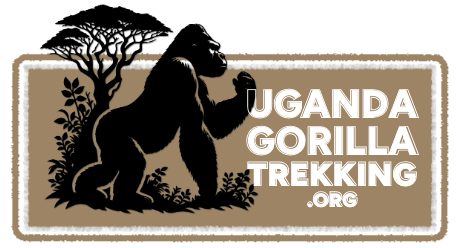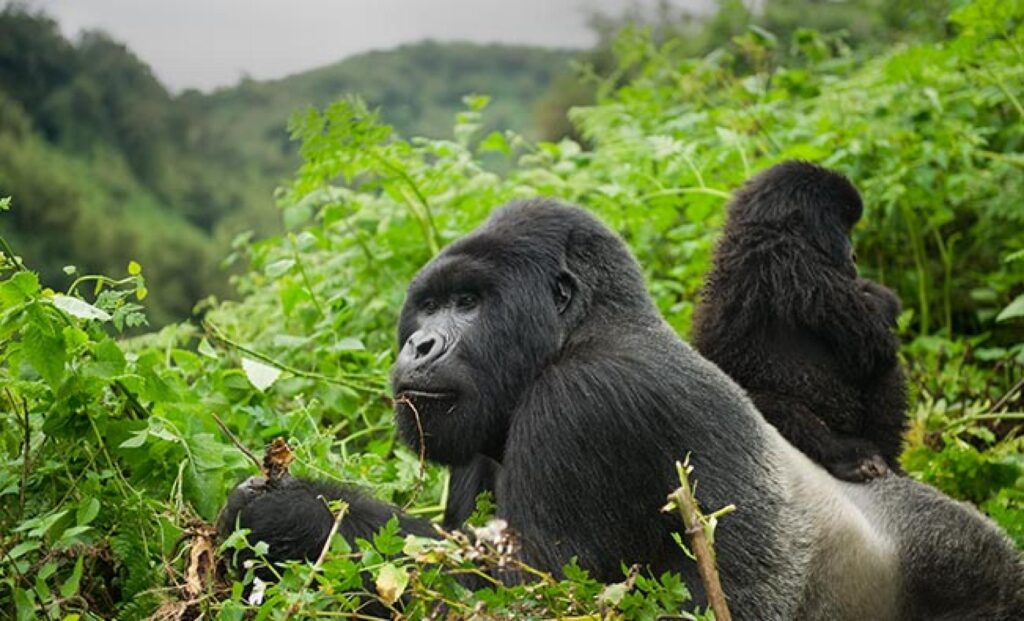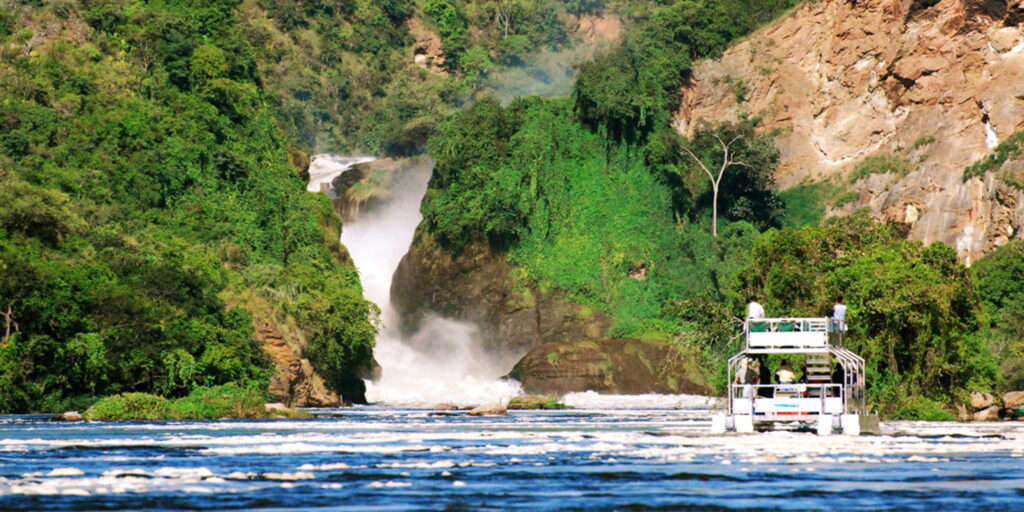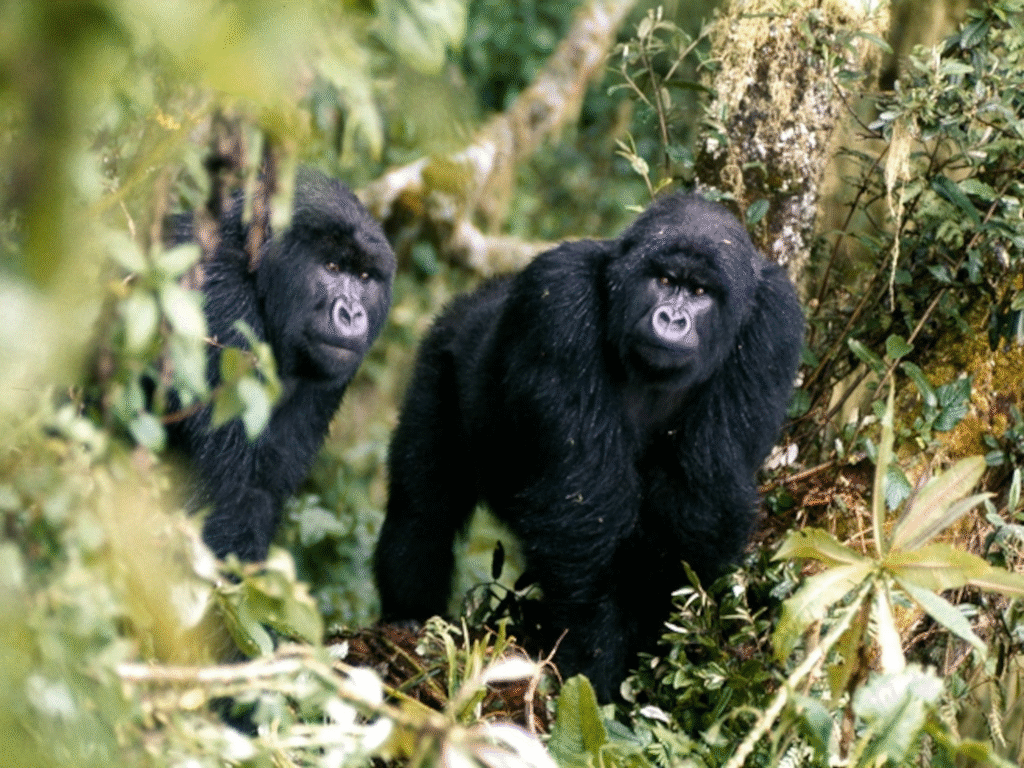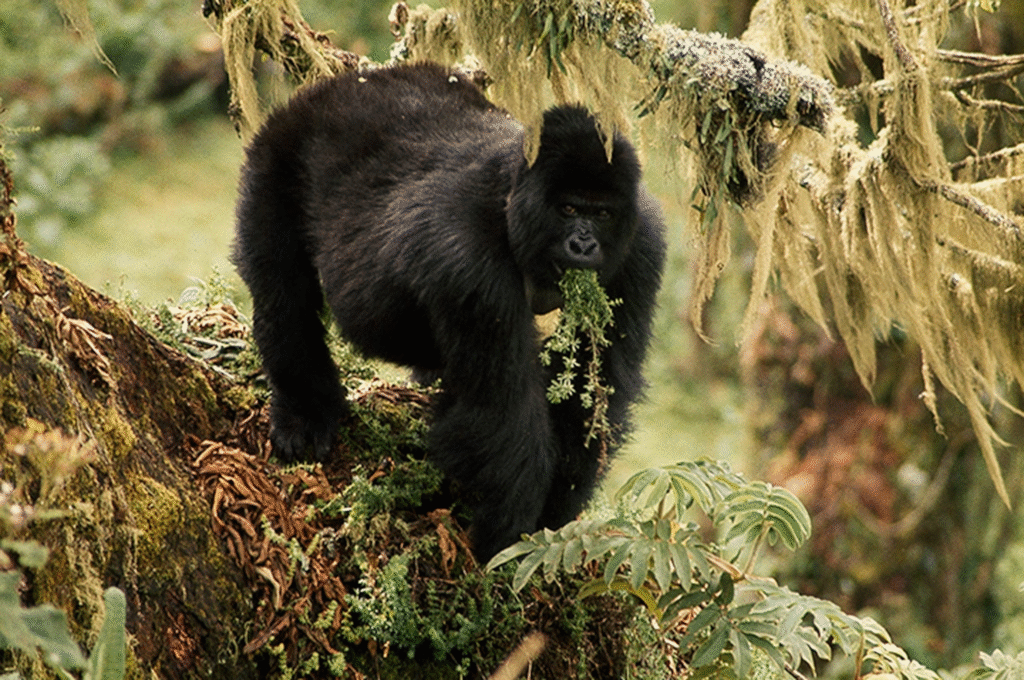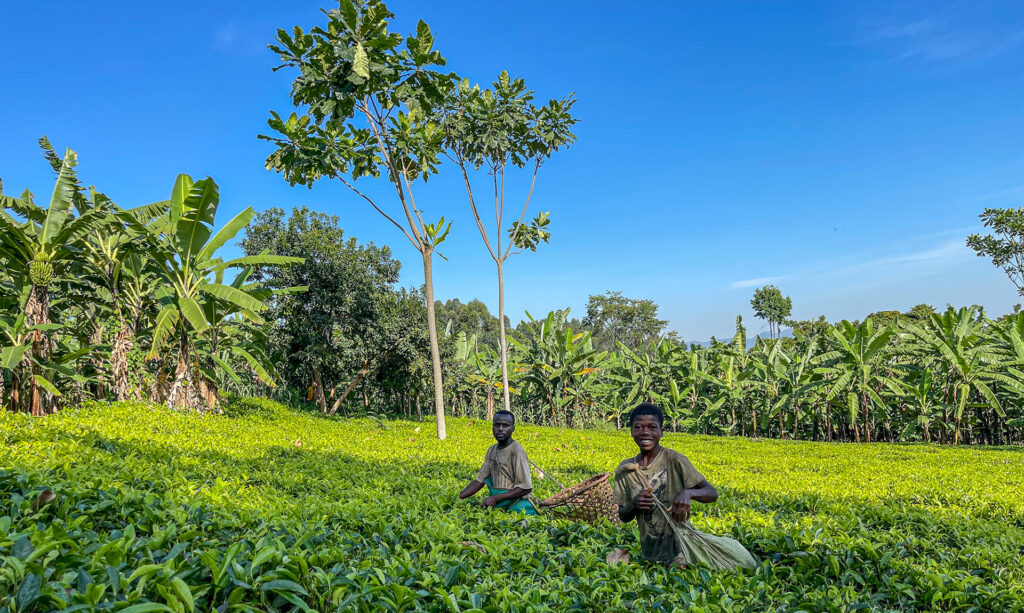Face to Face with Mountain Gorillas.
Welcome to the heart of wild Africa, where every breath of mist carries the rhythm of ancient forests, and every golden sunrise awakens a symphony of wildlife. Uganda’s national parks are more than just geographical marvels — they are sacred landscapes where adventure, conservation, and raw natural beauty collide to create some of the most unforgettable travel experiences on earth.
From the mystical canopies of Bwindi Impenetrable National Park, where endangered mountain gorillas quietly roam beneath the cover of emerald green, to the vast savannahs of Queen Elizabeth National Park, where elephants gather near crater lakes and lions rest high in fig trees, Uganda’s parks are alive with wonder. Each park offers a unique story — not just of biodiversity, but of ancient traditions, modern conservation efforts, and the promise of sustainable, immersive tourism.
Venture north to Murchison Falls National Park, where the mighty Nile explodes through a narrow gorge in a dramatic display of force, surrounded by giraffes, hippos, and elusive leopards. Or journey east to Mount Elgon, an extinct volcano with waterfalls, caves, and untamed hiking trails that whisper the secrets of time. In the shadows of volcanoes, Mgahinga Gorilla National Park bridges wildlife and culture, offering not just gorilla treks, but a connection to the spirit of the Batwa people, the original forest dwellers.
This guide is your starting point — an insider’s path to understanding where to go, what to see, and how to experience the very soul of Uganda’s wilderness. Whether you’re dreaming of walking among gorillas, gliding through papyrus wetlands on a boat safari, or standing beneath thunderous falls, the Pearl of Africa has a park that will awaken something primal in you.
So lace up your boots, grab your camera, and prepare to meet the wild — this is where your gorilla trekking dreams and unforgettable safari adventures truly begin.
Truly Iconic Highlights in Uganda
Trek through Bwindi’s mystical rainforest and meet the endangered mountain gorillas in their breathtaking natural home.
Encounter mountain gorillas and golden monkeys on Mgahinga’s misty volcanic trails, where culture and alpine wildlife thrive together.
Unwind after your trek with a peaceful canoe ride across Lake Bunyonyi, Uganda’s most tranquil and scenic highland lake.
Enhance your gorilla trekking safari with an optional chimpanzee encounter in Uganda’s lush forests, adding depth and diversity to your primate adventure
Gorilla Trekking Tours in Uganda – Our Most Popular Itineraries.
Explore our gorilla trekking safaris for every traveler—solo, family, budget, or luxury. All tours include permits, transport, accommodation, meals, and park fees. Whether for a quick trip or a deeper adventure, we’ve got you covered.
National Parks—Where Gorilla Tours Meet Wildlife Safaris
Uganda, the Pearl of Africa, beckons with Bwindi and Mgahinga’s lush forests where world‑renowned gorilla trekking seamlessly blends with thrilling wildlife safaris and vibrant cultural encounters.
Top Uganda National Parks for Gorilla Trekking and Wildlife Safaris.
Discover Uganda’s top national parks—Bwindi, Mgahinga, Queen Elizabeth, and Kibale—where unforgettable gorilla treks, golden monkey sightings, tree-climbing lions, and chimpanzee encounters come together in one seamless safari adventure.
Age Limit for Gorilla Trekking in Uganda and Rwanda: What Every Traveler Needs to Know
Gorilla trekking is one of the most emotional, awe-inspiring wildlife experiences on Earth—an intimate moment with the last remaining mountain gorillas in their natural habitat. However, not everyone is allowed to go on this journey, and the age limit is a critical part of the conservation rules enforced by both Uganda and Rwanda. If you’re planning a family safari or wondering whether your teenager qualifies, this guide will walk you through everything you need to know.
Why Is There an Age Limit for Gorilla Trekking?
The minimum age limit for gorilla trekking in both Uganda and Rwanda is 15 years. This rule is strictly observed by the Uganda Wildlife Authority (UWA) and Rwanda Development Board (RDB) for several reasons. First and foremost, gorilla trekking is not a simple nature walk. It involves hiking for hours through rugged, muddy rainforest terrain. The trails can be slippery, steep, and physically taxing, even for fit adults.
But the age limit isn’t just about physical readiness. It’s primarily about behavioral responsibility and disease control. Children under 15 may not always have the maturity to remain calm, quiet, and disciplined in the presence of wild gorillas. Sudden movements, fear, crying, or attempts to get too close could not only alarm the gorillas but also provoke unwanted reactions.
Another deeply important reason is the health of the gorillas themselves. These great apes share approximately 98% of their DNA with humans and are highly susceptible to human illnesses such as colds, flu, and respiratory infections. Children, especially those in their early teens or younger, are more likely to carry or be vulnerable to these viruses, often without showing symptoms. One mild cough from a child can easily become a fatal illness for a gorilla.
Is It Ever Possible for Children Under 15 to Trek?
In Rwanda, the rule is absolute. No person under 15 is allowed to participate in gorilla trekking. The Volcanoes National Park strictly enforces this without exception, making it clear and predictable for travel planning.
Uganda, however, is a little more flexible under very specific circumstances. While the official age remains 15, there are rare instances where a child slightly younger—typically aged 14 and turning 15 within the calendar year—may be allowed to join a trek. But such exceptions are never automatic. They must be requested in advance, evaluated by the Uganda Wildlife Authority, and approved on a case-by-case basis.
Tour operators may support your request if they believe the child is physically fit, mature, and capable of handling the trek without endangering themselves or the gorillas. It also helps if the family books a private trek, allowing the park to pair them with an easier gorilla group closer to the trailhead. But even then, the UWA has the final say. You will likely need to provide official documents (like a passport), a letter of request, and a medical clearance or liability waiver.
What Happens if You Travel with a Child Under 15?
If your child is underage and not granted an exception, they will not be issued a gorilla permit, even if you try to book through a third-party agent. Permit applications include passport details that are verified by the authorities. If you are already in-country, some tour operators may help you arrange alternative activities for the child—like a nature walk, cultural village visit, or birding tour—while you and other adults trek.
It’s essential to plan around this rule. Showing up at the park gate with a child hoping for a last-minute decision is not advisable. It will lead to disappointment, forfeited permits, and missed opportunities.
Is There an Upper Age Limit?
Interestingly, there is no maximum age for gorilla trekking. Seniors in their 60s, 70s, and even 80s have successfully trekked with proper preparation. In fact, Uganda offers a special “senior-friendly” experience by allowing older visitors or those with mobility concerns to be assigned to gorilla groups that live closer to the trailhead. For those who are unable to hike long distances, a sedan chair (locally known as the “African helicopter”) carried by porters can be arranged at an additional cost.
Age should never be a barrier to seeing the gorillas—only your level of fitness and health. But for minors, age remains a strict legal cutoff.
Why 15 Years Old? The Conservation Science Behind It
The decision to set the age limit at 15 is rooted in research and practical conservation. This age is considered the threshold where individuals begin to demonstrate the mental maturity, physical capability, and emotional stability necessary for such close wildlife encounters. At this age, most teens can comprehend instructions, understand the value of silence and calm, and maintain discipline in an unpredictable forest setting.
Furthermore, the interaction between humans and gorillas must remain as non-invasive as possible. Trekking is already a carefully regulated activity with only one hour of viewing time permitted per group, per day, and with a maximum of eight people per gorilla family. Reducing any additional risks, including those that might come from children, helps maintain the integrity of this balance between tourism and conservation.
In the Realm of Giants – Bwindi & Mgahinga in Frames.
Wander through an elegant gallery capturing Uganda’s most exclusive gorilla sanctuaries, where ancient forests cradle the last mountain gorillas in a world of mist, mystery, and majesty.
Essential Planning Tips for Visiting Uganda’s National Parks.
Get ready for the wild heart of Africa with expert travel tips on when to visit, what to pack, where to go, and how to make the most of your safari across Uganda’s breathtaking national parks.
Why Uganda for Gorilla Trekking?
Uganda is not just a destination — it's the very soul of gorilla trekking. With over half of the world’s remaining mountain gorillas calling its misty forests home, Uganda offers the rarest encounters in their most authentic setting. Here, your journey is not rushed or crowded. Instead, you’re guided by experienced rangers through pristine jungles where gorillas live as they always have — wild, free, and magnificent
From insider travel insights to unforgettable trekking guides, our blog is your trusted path into Uganda’s wild heart — connecting you with mountain gorillas, breathtaking landscapes, and the soul-stirring adventures that make this land unlike any other.
